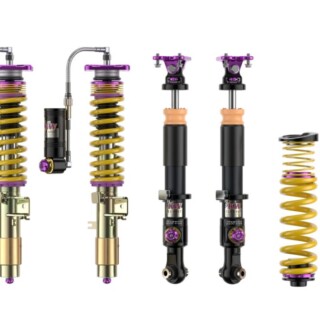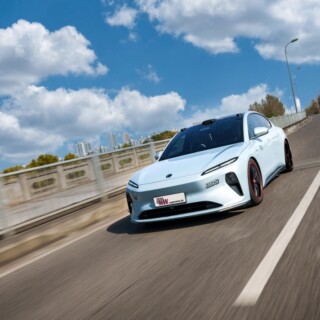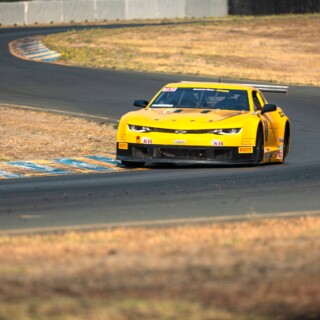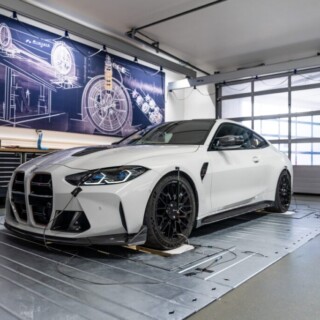
Suspension and shock absorbers are a very complex subject. The range of different Coilover suspension kits and damper technologies we offer can also sometimes be considered equally as diverse. To simplify we have divided our applications into the product groups “Street Comfort,” “Street Performance,” and “Track Performance.”

The suspensions are placed into these categories based on their respective parameters and options for that correspond to their intended requirements, for example like stepless lowering. Since every suspension is basically a compromise of another, our categories of the different suspension kits allow you to quickly see how they vary and make it simple to determine, for example, that a suspension kit from our “Street Comfort” category will not be the right tool you need if you are trying to achieve the fastest lap time possible when attacking the Nordschleife.

One of our tools we use for suspension development is housed in our vehicle dynamics test facility. In technical jargon, the hydraulic chassis dynamometer housed withing is often just referred to as a “7-Post Shaker Rig,” which we purchased from the BAR-Honda Formula 1 team several years ago. With this test rig, we can analyze the complex interaction of damper forces, spring rates, tire carcasses, elasto-kinematics, and vehicle body directly installed on the car. For some suspension basics, you can find a brief suspension wiki (LINK) on our KW automotive blog.

Our test and tuning aspirant for today is a 330i BMW 3 series sedan (G20) that is not in production condition but built according to the VT2 class regulations. The BMW racing car is quite close to series production as many fans of the white-blue brand can see at first glance. Although the G20 is miles away from a road car, any race car that starts in the VT2 class is closer to production than, for example, a race car that complies with GT4 or GT3 regulations.

So why do motorsport teams regularly come to us to use the driving dynamics test facility and spend hours or sometimes even days behind closed doors? To study the behavior of their vehicles! We help various motorsport customers effectively prepare their racing car for the next race or season. It does not matter if they are using our racing suspension or one from another supplier.

Many customers find this vehicle dynamics testing much more affordable and more enlightening than a test day at the racetrack. In addition to the savings, a test day provides an ideal basis for a basic set-up. Depending on the vehicle and the specifications, one day on our 7-Post Rig can replace up to three or four test days at the racetrack. During a test day with a VT2 vehicle, we carry out quick test called “4-post-sweeps“ comparing different damper setups, spring combinations and various tire compounds. The aim of the whole process is to give the racing team various setup recommendations and understand which setup works best for their anticipated race conditions.

To ensure that our test engineers can access all the data, the entire racing car is wired with sensors. In addition to the wiring, the four large rams, which the four wheels of the vehicle are sitting on, have built in load cells and function as wheel load scales. Each individual pillar is actuated hydraulically and can create a pressure of up to 230 bar in the pipes and hoses.

The movement of the four large rams causes the entire body to vibrate. The engineers analyze the resonant frequencies where the amplitude of the forced excited body becomes maximum. During oscillation, the BMW passes through a frequency range from one hertz to 20 hertz at a constant speed in the phase-zero transit.

If the natural oscillation frequency of the vehicle is not properly damped, the entire system can no longer be controlled. It sounds a bit abstract and it very much is. To break it down more simply, our engineers use this to observe a tremendous amount of data that allows them to see how even small transverse joints or wavy asphalt surfaces caused by weather can affect the vehicle. In addition to measurements at constant speeds of 75 mm/s, 150 mm/s, 200 mm /s, or 250 mm/s, we can even map different racetracks during “track replay”.

A measurement takes only 64 seconds and from this data, our engineers can find the proverbial hair in the soup to allow the motorsport engineers for the team to make changes that improve the undesired behavior. We can simulate, for example, what happens to the racing car when it drives over a bump allowing us to see how quickly this force impulse is balanced and dissipated via the springs and dampers.

The BMW 3-series has our 3-way adjustable KW Competition 3A EXR racing suspension installed and through the various setups and tuning work we can give our customers a basic set-up for testing on the track so on that test day the team can fine-tune the last percentage points in the suspension set-up.

When running tests at the driving dynamics test facility, our goal to optimize the wheel load fluctuations and the frictional connection between the road surface and the tires. The more lateral forces that can be built up, the more lateral forces we control via the chassis, the faster the cornering speeds can be driven on the track.

Simply put, the job of the damper and the spring – even in motorsports – is to keep all parameters in perfect balance. In a way, we are always looking for the perfect compromise to dampen vibrations without risking a loss of tire grip or a loss of body control due to excessive pitching and body roll. The more unsteady the bodywork becomes, the less the aerodynamics are working at optimum efficiency, even in a VT2 racing car. Clearly, the optimum aero load is less aggressive with a VT2 car than with GT3 or LMP or Formula cars.
In the Manthey Grello YouTube video above, you see our vehicle vertical dynamic rig in the 7-Post mode. In the so-called track replay we can also simulate aero loads.

During a test day at our driving dynamics test facility, we also offer the possibility to completely rebuild the damper internals and combine it with different springs. Many people always ask themselves whether they need an appointment for the driving dynamics test bench with their KW Coilover suspension for their car, but this is not necessary.

Every KW Coilover suspension with part certificates, be it a KW 3-way Clubsport, an adaptive KW DDC, KW Variant 1, or our new KW Variant 5 Coilover suspension is tuned for the respective vehicle with on-road test drives and at the driving dynamics test facility.
In the YouTube video above, our development engineer Michael Rohn takes you on a test drive in our BMW M2 with retrofitted KW DDC ECU Coilover suspension. If you need setup tips for your KW adjustable coilovers, our KW dealer partners will be happy to assist you, or you can always take a look at the setup instructions included with each KW adjustable coilover.








